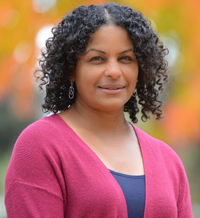Honor to Whom Honor is Due:
Celebrating Black History Month
For Sunday January 29, 2012
Lectionary Readings (Revised Common Lectionary, Year B)
Deuteronomy 18:15–20
Psalm 111
1 Corinthians 8:1–13
Mark 1:21–28
When I finished grad school in 1985, I had one job offer, so that summer our family moved to Michigan and I began a six-year stint teaching at William Tyndale College. One of the best parts about Tyndale was that 35% of our students were African Americans.
While many people at Tyndale argued whether women could be ordained, or even enroll in a preaching class, our black students mainly ignored the controversy and went about their business with quiet confidence. Latricia pastored a store front church that her grandmother had founded. Corletta led a mega-church and traveled the world preaching. Lee Artemis pastored a historic "steeple church" in inner city Detroit, and even invited me to preach one Sunday. Lois still keeps in touch today, twenty-five years later.
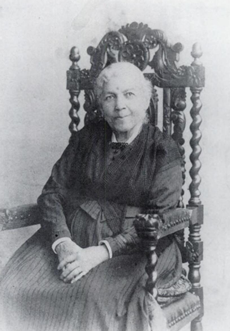 |
Harriet Jacobs (1813 - 1897): former slave, abolitionist, and author of "Incidents in the Life of a Slave Girl" (1861). |
I'll always remember my black students with gratitude, as sisters and brothers who encouraged me with their robust faith. I'm grateful for Black History Month because among other things it reminds me how those students helped shape my life even beyond those six years with them.
One of the most counter-intuitive facts of history is that blacks adopted the religion of their white oppressors, a religion that was often the primary means of their oppression. Beginning in 1444 and lasting over four hundred years, the European slave trade "marketed and merchandised" 40 million African people. Black history in America began in August of 1619 when 20 slaves disembarked from a ship in Jamestown, Virginia, and the captain traded them for "victualle." By 1860, the United States census identified four million slaves. 1
The Civil War didn't end because of Christian good will, observes historian Mark Noll, but because of the armies that slaughtered 620,000 Americans — mass death on an unprecedented and unimaginable scale that was "equal to the total American fatalities in the Revolution, the War of 1812, the Mexican War, the Spanish-American War, World War I, World War II, and the Korean War combined." These "combatant" deaths don't include civilian deaths. And since over half of the Civil War dead were never identified, many people lost not only their lives but even their names.2
A significant number of the four million slaves freed after the Civil War lived into the 1940s. During the Depression, the Federal Writers Project hired people to interview and record first person narratives from these former slaves, the last first-hand resource that could document their slave experiences. Today the Library of Congress houses 2,000 such interviews, in their original "dialect" and broken English, in the simply-titled Slave Narratives, portions of which are available on the one-hour film called Unchained Memories; Readings from the Slave Narratives (2003).
Unchained Memories uses original still photographs, contemporary re-enactments, slave music, a running commentary by Whoopi Goldberg, and, most notably and thus the film's title, dramatic readings of those original slave narratives by contemporary African-American actors and actresses like Oprah Winfrey. They recall the daily horrors of slave life from those who lived to tell of it — relentless work, miserable housing and diet, the denial of education, sexual violence, and how the "masters" used Christianity to keep their slaves passive.
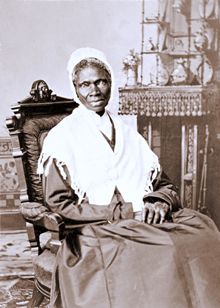 |
Sojourner Truth (1797-1883): former slave, reformer and author of "Ain't I a Woman?" (1851). |
Neither the Civil War, the Emancipation Proclamation, nor the Thirteenth Amendment fully abolished what Abraham Lincoln called the "monstrous injustice" of slavery. After all, it was the planters who were reimbursed for their "losses," not the slaves. And as Isabel Wilkerson shows in her award-winning book The Warmth of Other Suns (2010), the years of reconstruction gave way to a Jim Crow south that was characterized by a "feudal caste system" of lynchings, terror, torture and violence.
They say a picture's worth a thousand words, but no words can describe, let alone explain, the horrific crimes against humanity documented in Without Sanctuary; Lynching Photography in America (2000) — and not "just" the hangings, but burnings, castration, mutilation, and sadistic tortures like cutting unborn babies from their mother's womb. This is a significant part of American history, even if high school history courses ignore it.
"In the late nineteenth and early twentieth century," writes Leon Litwack, "two or three black southerners were hanged, burned at the stake, or quietly murdered every week. In the 1890s, lynchings claimed an average of 139 lives each year, 75 per cent of them black. The numbers declined in the following decades, but the percentage of black victims rose to 90 percent. Between 1882 and 1968, an estimated 4,742 blacks met their deaths at the hands of lynch mobs." These are only the documented cases, and they don't include the "legal lynchings" of perverted "justice," or private posses on "nigger hunts."
Some lynchings were done in remote areas by psychopaths, but many others were public spectacles that were advertised, described by lurid media headlines ("colored man roasted alive"), and attended by thousands of voyeuristic spectators. They were carried out and celebrated by leading citizens, state and federal congressmen, and leaders in business and church. "Our American Christians," wrote the anti-lynching activist Ida B. Wells, "are too busy saving the souls of white Christians from burning in hell-fire to save the lives of black ones from present burning in fires kindled by white Christians." There was no due process of law in most of these lynchings, nor any attempt to hide the identity of the executioners. The US postal service even mailed commemorative post cards with pictures of lynchings. Trains provided free services to the spectacles.3
When six million blacks fled the south in the Great Migration of 1915–1970, they often experienced a new and virulent strain of what Wilkerson calls "hyper-racism" in the north and west. That led to all sorts of difficulties and disillusionments in housing, education, health care, and employment. Not only whites (especially European immigrants), but old-time blacks resented the new arrivals.
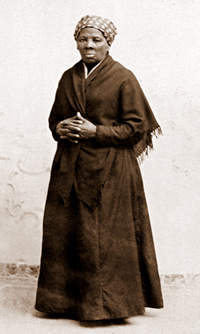 |
Harriet Tubman (1822-1913): Former slave and leader of the Underground Railroad who rescued 300 slaves. |
Maybe blacks accepted the gospel because they knew their Bibles well, especially prophetic texts like Isaiah 58. Whatever the reason(s), Lerone Bennett points out in Before the Mayflower that toward the end of the nineteenth century, the black church “quickly established itself as the dominant institutional force in black American life.” Martin Luther King was a churchman, and there was never a time when he was not a pastor (at Dexter Avenue Baptist Church in Montgomery and Ebenezer Baptist in Atlanta). About himself, he said, “I am… the son of a Baptist preacher, the grandson of a Baptist preacher, and the great grandson of a Baptist preacher. The Church is my life and I have given my life to the Church."4
Yes, genuine change has come, even if too slowly. Vermont became the first state to abolish slavery in 1777. In her book The Breakthrough; Politics and Race in the Age of Obama (2009), Gwen Ifill chronicles how radical changes have redefined the role of blacks in American politics. Today, for example, there are over forty black city mayors. There's no longer anything like a monolithic "black politics" in America. She devotes one chapter each to four "case studies" of the new generation of black politicians — Obama, Artur Davis, a congressman from Birmingham, Alabama; Cory Booker, mayor of Newark, New Jersey; and Deval Patrick, governor of Massachusetts.
Ifill then explores four themes — the complex relationship of generation change, in which younger black politicians must relate to their older forbears who carried the torch during the days of the civil rights movement when many of them weren't even born; race and gender — which group is more disadvantaged, and which identity helps or hurts more in politics; legacy politics, in which a younger generation enjoys the advantages and negotiates the disadvantages of a parent politician (eg, Jesse Jackson, Jr.); and the politics of identity in which the new generation walks the tightrope of being "too black" for whites and/or "too white" for blacks.
More recently, the Pulitzer Prize winner Eugene Robinson explores contemporary black America in his book Disintegration: The Splintering of Black America (2010.) There's no longer a single narrative that's adequate to describe America's 40 million blacks, says Robinson. Instead, black America has experienced a radical "disintegration" that is both hopeful and dispiriting. Indeed, a 2007 Pew poll found that a stunning 37% of blacks agreed with the statement that "blacks today can no longer be thought of as a single race because the black community is so diverse." Robinson proposes that black America has fragmented into four distinct groups that are "increasingly distinct, separated by demography, geography, and psychology. They have different profiles, different mind-sets, different hopes, fears, and dreams."
There's an enormous black middle class that has entered America's mainstream. This is a heroic story that qualifies as nothing less than a "miracle." In 1967, only 25% of black households had a median income of more than $35,000; by 2005, that figure had nearly doubled to 45.3%. The percentage of black households earning more than $75,000 increased from 3.4% to 15.7%. In education, during the same time period, high school graduation rates for blacks increased from 29.5% to 83%, for all intents and purposes achieving "full parity" with white graduation rates of 87%.
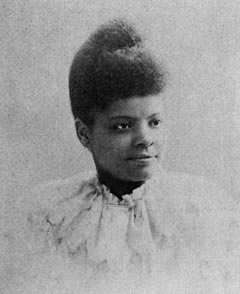 |
Ida B. Wells (1862-1931): Civil rights leader and author of "Southern Horror: Lynch Law in All Its Horror" (1892). |
Then there's a black elite that he calls "transcendents," like Oprah, Obama, Condi Rice and Colin Powell. There have always been isolated, individual black elites, but now there are enough of them to comprise a "critical mass" that wields influence in every sector of society. Third, there are "emergents," made up of two distinct groups — immigrants from Africa and the Caribbean, and then blacks in biracial marriages (which only became legal in all states in 1967). A Pew study found that in 2008, 22% of black males and 9% of black females married "outside their race." Of special interest are the children of emergents, for whom Jim Crow racism is not a bitter, shared experience, but a story learned from history books. Finally, there are the "abandoned," symbolized in the events of Katrina and the movie Precious. The abandoned are "profoundly isolated," and because of this have created their own "cultural ecosystems." They need nothing less than an aggressive "domestic Marshall Plan."
A few years ago I observed Black History Month by reading some primary materials on the subject. Of the many good options, I chose three slave narratives: Narrative of the Life of Frederick Douglass (1845), the Narrative of Sojourner Truth (1850), and Incidents in the Life of a Slave Girl (1861) by Harriet Jacobs. This year I'm reading the critically-acclaimed biography Malcom X (2011) by Manning Marable.
I'm also offering a prayer of thanks for the Christian witness of my black students, who twenty-five years ago taught their professor a thing or two.
[1] Lerone Bennett, Jr., Before the Mayflower; A History of Black America (1962); Adam Hochschild, Bury the Chains; Prophets and Rebels in the Fight to Free an Empire's Slaves (2005); and his previous book, King Leopold's Ghost: A Story of Greed, Terror, and Heroism in Colonial Africa (1999) about Belgium's plunder of the Congo. For the catastrophic consequences of this legacy in modern Congo, see Jason Stearns, Dancing in the Glory of Monsters; The Collapse of the Congo and the Great War of Africa (2011).
[2] Mark Noll, The Civil War as a Theological Crisis (2006); Drew Gilpin Faust, This Republic of Suffering; Death and the American Civil War (2008). For Harriet Beecher Stowe's prophetic role in ending slavery see David S. Reynolds, Mightier Than the Sword; "Uncle Tom's Cabin" and the Battle for America (2011).
[3] For a narrative history of lynching see Philip Dray, At the Hands of Persons Unknown; The Lynching of Black America (2002). Dray documents a "systematized reign of terror" in America. According to Dray, it was not until 1952 that an entire year passed without a racial lynching.
[4] Quoted in Mervyn Warren, King Came Preaching (2001). Under the leadership of King's father, Ebenezer Baptist Church in Atlanta grew from six hundred to four thousand members.
For further reflection:
* Watch the seven-part PBS documentary on the civil rights movement called Eyes on the Prize. Each episode is an hour long.
* Listen to an audio/video of Martin Luther King's "I Have a Dream" speech.
Image credits: (1) Wikipedia.org: Harriet Ann Jacobs; (2) Wikipedia.org: Sojourner Truth; (3) Wikipedia.org: Harriet Tubman; and (4) Wikipedia.org: Ida B. Wells.




